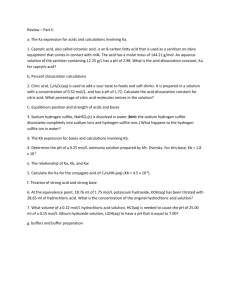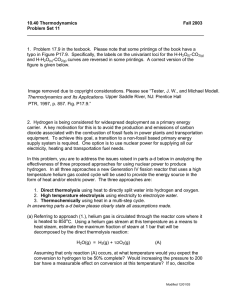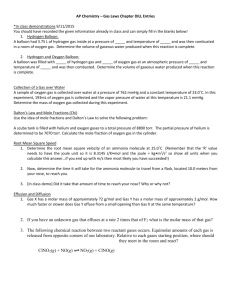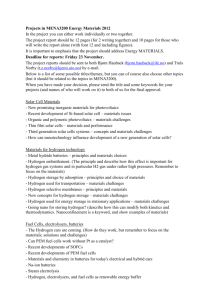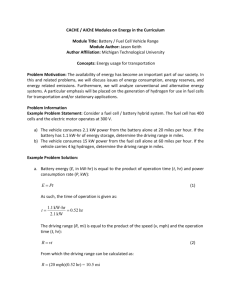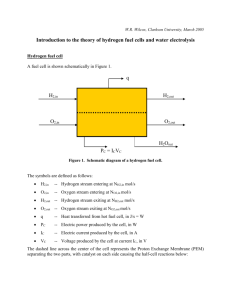Module 12: Solar Energy Analysis - Michigan Technological University
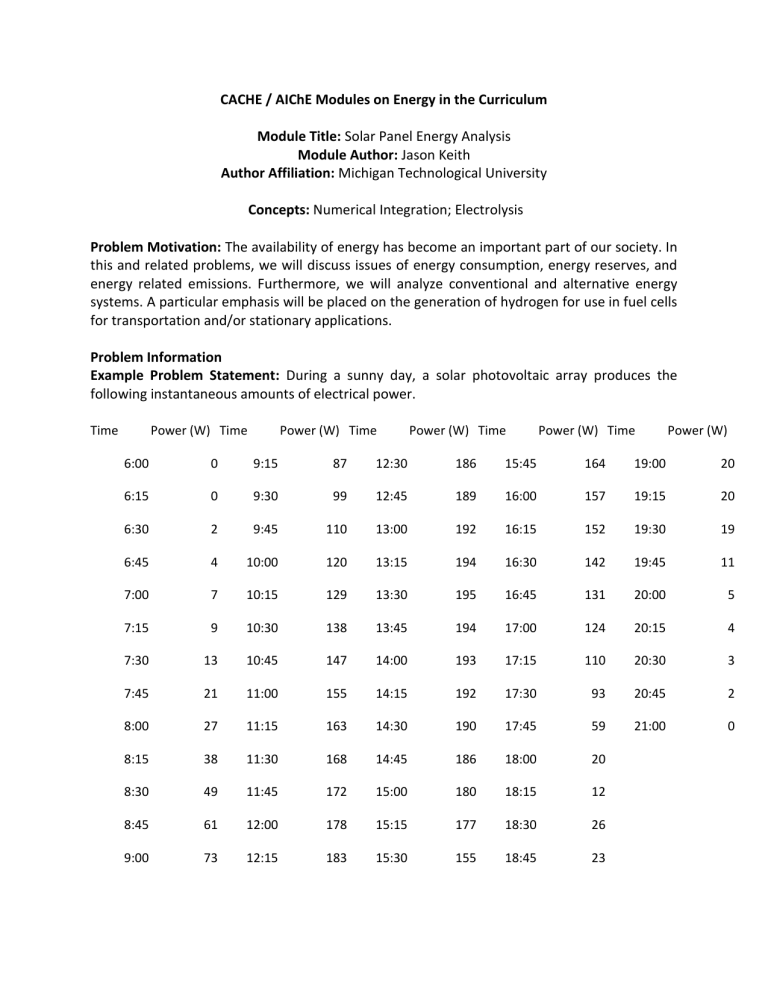
8:00
8:15
8:30
8:45
9:00
6:15
6:30
6:45
7:00
7:15
7:30
7:45
CACHE / AIChE Modules on Energy in the Curriculum
Module Title: Solar Panel Energy Analysis
Module Author: Jason Keith
Author Affiliation: Michigan Technological University
Concepts: Numerical Integration; Electrolysis
Problem Motivation: The availability of energy has become an important part of our society. In this and related problems, we will discuss issues of energy consumption, energy reserves, and energy related emissions. Furthermore, we will analyze conventional and alternative energy systems. A particular emphasis will be placed on the generation of hydrogen for use in fuel cells for transportation and/or stationary applications.
Problem Information
Example Problem Statement: During a sunny day, a solar photovoltaic array produces the following instantaneous amounts of electrical power.
Time Power (W) Time Power (W) Time Power (W) Time Power (W) Time Power (W)
6:00 0 9:15 87 12:30 186 15:45 164 19:00 20
0
2
9:30
9:45
4 10:00
7 10:15
9 10:30
13 10:45
21 11:00
27 11:15
38 11:30
49 11:45
61 12:00
73 12:15
99 12:45
110 13:00
120 13:15
129 13:30
138 13:45
147 14:00
155 14:15
163 14:30
168 14:45
172 15:00
178 15:15
183 15:30
189 16:00
192 16:15
194 16:30
195 16:45
194 17:00
193 17:15
192 17:30
190 17:45
186 18:00
180 18:15
177 18:30
155 18:45
157 19:15
152 19:30
142 19:45
131 20:00
124 20:15
110 20:30
93 20:45
59 21:00
20
12
26
23
4
3
2
20
19
11
5
0
a) Determine the cumulative electrical energy produced in kW-hr b) Determine the cumulative electrical energy produced in J c) An electrolysis unit operates at 60% efficiency. If the theoretical amount of energy needed to convert 1 mol of liquid water into 1 mol of hydrogen and ½ mol of oxygen is
285 kJ, determine the mass of hydrogen produced in g for one day. d) If a fuel cell car can travel 60 miles per kg of hydrogen, determine the driving range from the solar power.
Example Problem Solution: a.
We can use numerical integration using the Trapezoidal rule to determine the total amount of electrical energy produced by the panel.
E
sunset
sunrise
( ) ~
N i
1
1
1
2
( P i
P i
1
)
t
For a constant step size
t we can calculate the energy production as:
E
sunset
sunrise
( ) ~
1
2
P
1
1
2
P
N
N i
1
2
P i
t
(1)
(2)
In our data, the step size is uniform at ¼ hr so we can use equation 2 to estimate the energy production. We obtain:
E = (½ * 0 + ½ * 0 + 0 + 2 + 4 + 7 + …) W (1/4) hr = 1468 W-hr = 1.47 kW-hr b.
We can convert units to calculate the energy production in J. We have:
1468 W-hr 3600 s J/s
(3) hr W c.
We can convert units to calculate the hydrogen production in mol, and use the molecular weight to give the number of grams of hydrogen. Noting the 60% efficiency, we have:
6
5.28 10 J(0.60) kJ mol 2 g
22 g (4)
1000 J 285 kJ mol d.
We can use the fuel economy of the fuel cell vehicle to estimate the driving distance.
22g kg 60 mi
1.3mi
1000 g kg
Home Problem Statement: During a cloudy day, a solar photovoltaic array produces the following instantaneous amounts of electrical power.
Time Power (W) Time Power (W) Time Power (W) Time Power (W) Time Power (W)
6:00
6:15
6:30
6:45
7:00
7:15
7:30
0
0
0
9:15
9:30
9:45
0 10:00
1 10:15
1 10:30
1 10:45
22 12:30
29 12:45
108 13:00
117 13:15
121 13:30
142 13:45
100 14:00
17 15:45
6 16:00
3 16:15
20 16:30
121 16:45
170 17:00
182 17:15
155 19:00
149 19:15
146 19:30
138 19:45
128 20:00
119 20:15
109 20:30
7:45
8:00
8:15
8:30
2 11:00
3 11:15
5 11:30
13 11:45
64 14:15
84 14:30
92 14:45
59 15:00
170 17:30
102 17:45
24 18:00
56 18:15
99 20:45
86 21:00
75
63
8:45 31 12:00 78 15:15 177 18:30 51
39 9:00 12 12:15 27 15:30 164 18:45 a) Determine the cumulative electrical energy produced in kW-hr b) Determine the fraction of energy produced compared with the sunny day from the example problem. c) An electrolysis unit operates at 60% efficiency. If the theoretical amount of energy needed to convert 1 mol of liquid water into 1 mol of hydrogen and ½ mol of oxygen is
285 kJ, determine the mass of hydrogen produced in g for one day. d) If each solar panel has area of 70” x 40”, determine the number of panels and solar surface area in ft 2 required to supply 1 kg of hydrogen on cloudy days.
16
16
12
9
29
12
19
7
0


